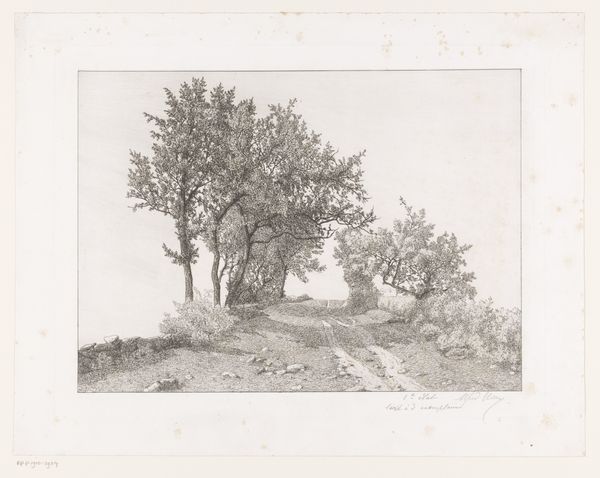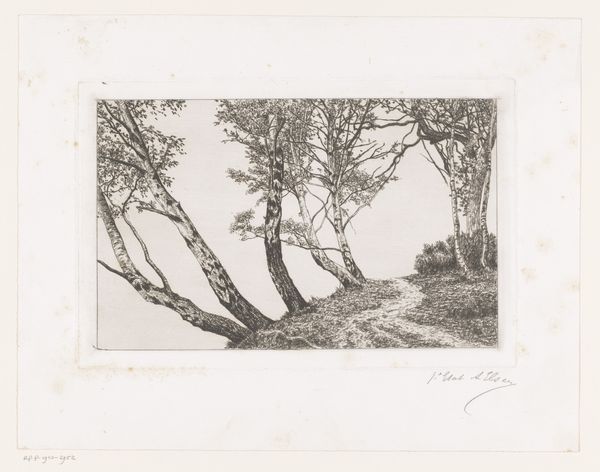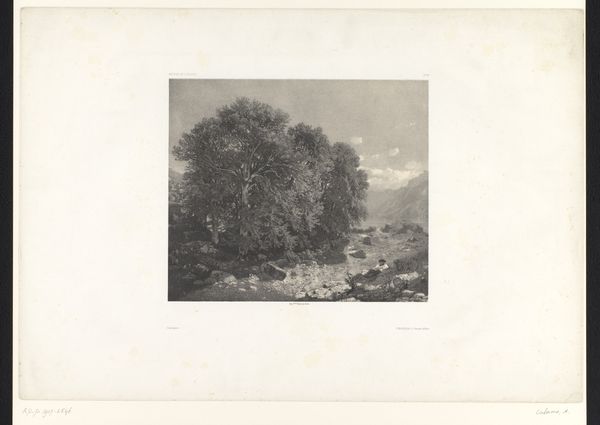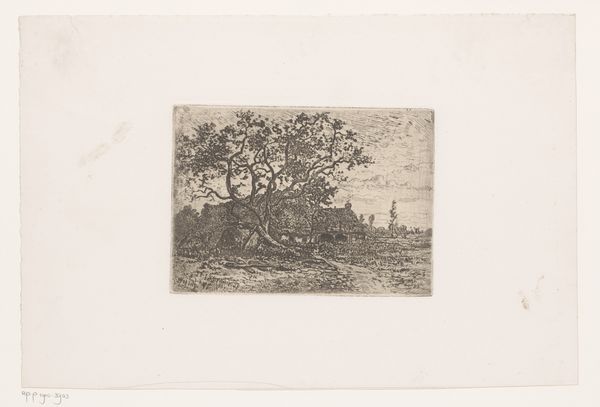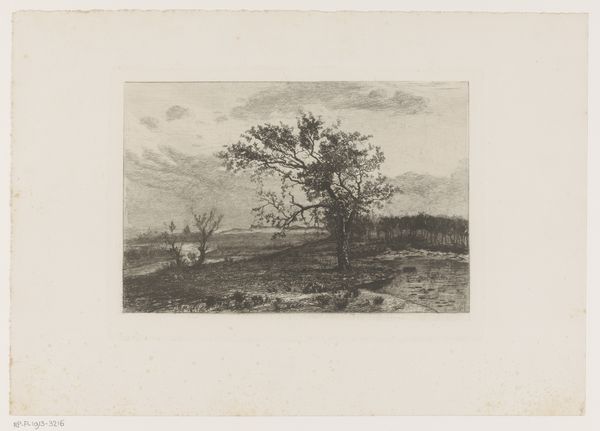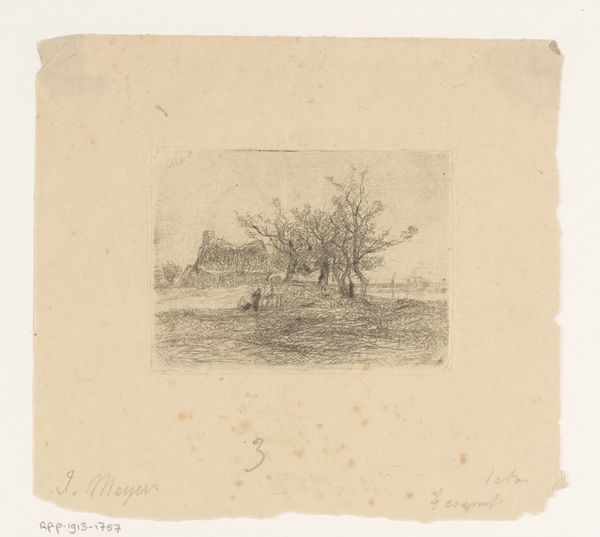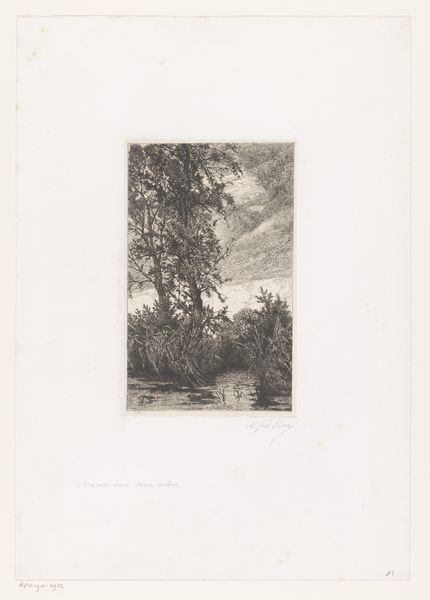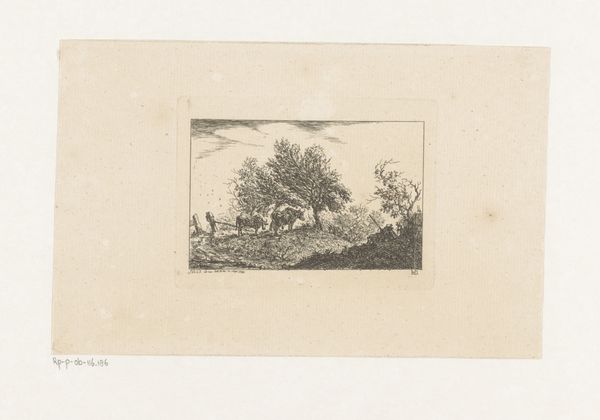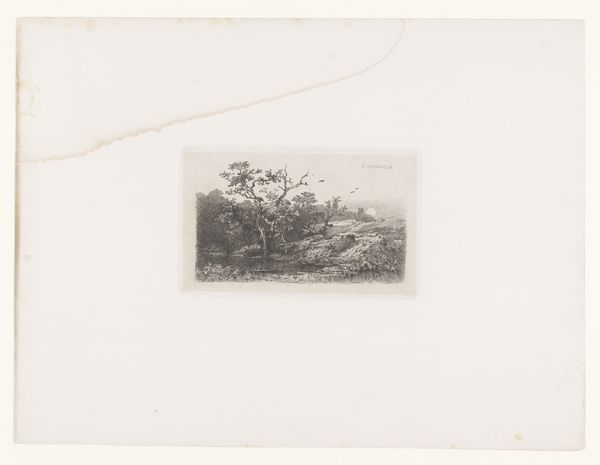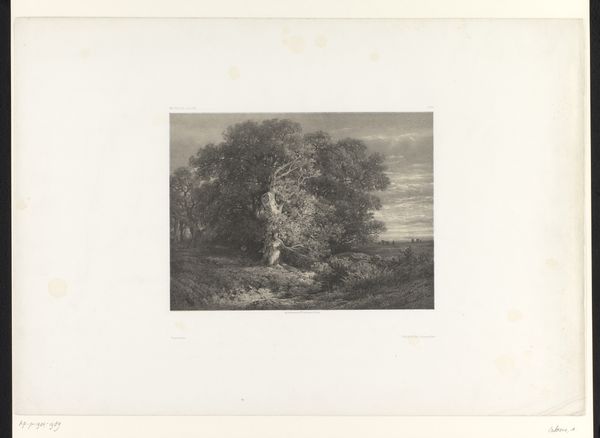
#
pencil drawn
#
photo of handprinted image
#
aged paper
#
light pencil work
#
parchment
#
pencil sketch
#
light coloured
#
old engraving style
#
watercolour illustration
#
watercolor
Dimensions: height 145 mm, width 190 mm
Copyright: Rijks Museum: Open Domain
Curator: This work, simply titled "Landschap," by Arthur F. Davis, dates to between 1875 and 1907. It's rendered in what appears to be watercolor and pencil on paper. Editor: Immediately, I’m struck by the tranquility. The limited palette and delicate lines create a somber and peaceful atmosphere. It makes me think about how the process of making this work—applying pigment to paper—was likely a contemplative act for the artist. Curator: It's tempting to view this scene as an idealized landscape, but I think situating it within the period of its creation provides richer insights. The late 19th century saw the rise of industrialization and urbanization. Looking at this landscape now, does it reflect a nostalgic yearning for an untouched, pre-industrial world? Or even a subtle critique of land usage during that time? Editor: I'm interested in the choice of materials. Why pencil and watercolor? The seeming casualness contrasts sharply with academic painting of the era. This points towards a rejection of industrial aesthetics and perhaps aligns with the Arts and Crafts movement emphasis on handcrafted, artisanal pieces and accessible artistic practices for people and social change. Curator: Precisely. The choice to depict nature could reflect a larger sociopolitical moment where the "natural" was held in contrast to what was considered the artificiality of the industrial world. Furthermore, considering Davis’s broader artistic practices could allow us to infer connections between this piece and the narratives or struggles prevalent during that historical moment. Editor: I’m curious about the implied labor, or lack thereof. Was this a work made in solitude? And for whom? These lighter materials also point to an increased market for domestic artistic production intended for personal aesthetic consumption. Curator: Examining "Landschap" then, lets us consider how artistic choices are often rooted in reactions and commentaries on societal change and artistic norms. It encourages dialogues between art history, gender, race, and the politics of that period. Editor: Right. Ultimately, this unassuming sketch acts as a compelling invitation to interrogate artistic processes and understand their social echoes and repercussions.
Comments
No comments
Be the first to comment and join the conversation on the ultimate creative platform.

